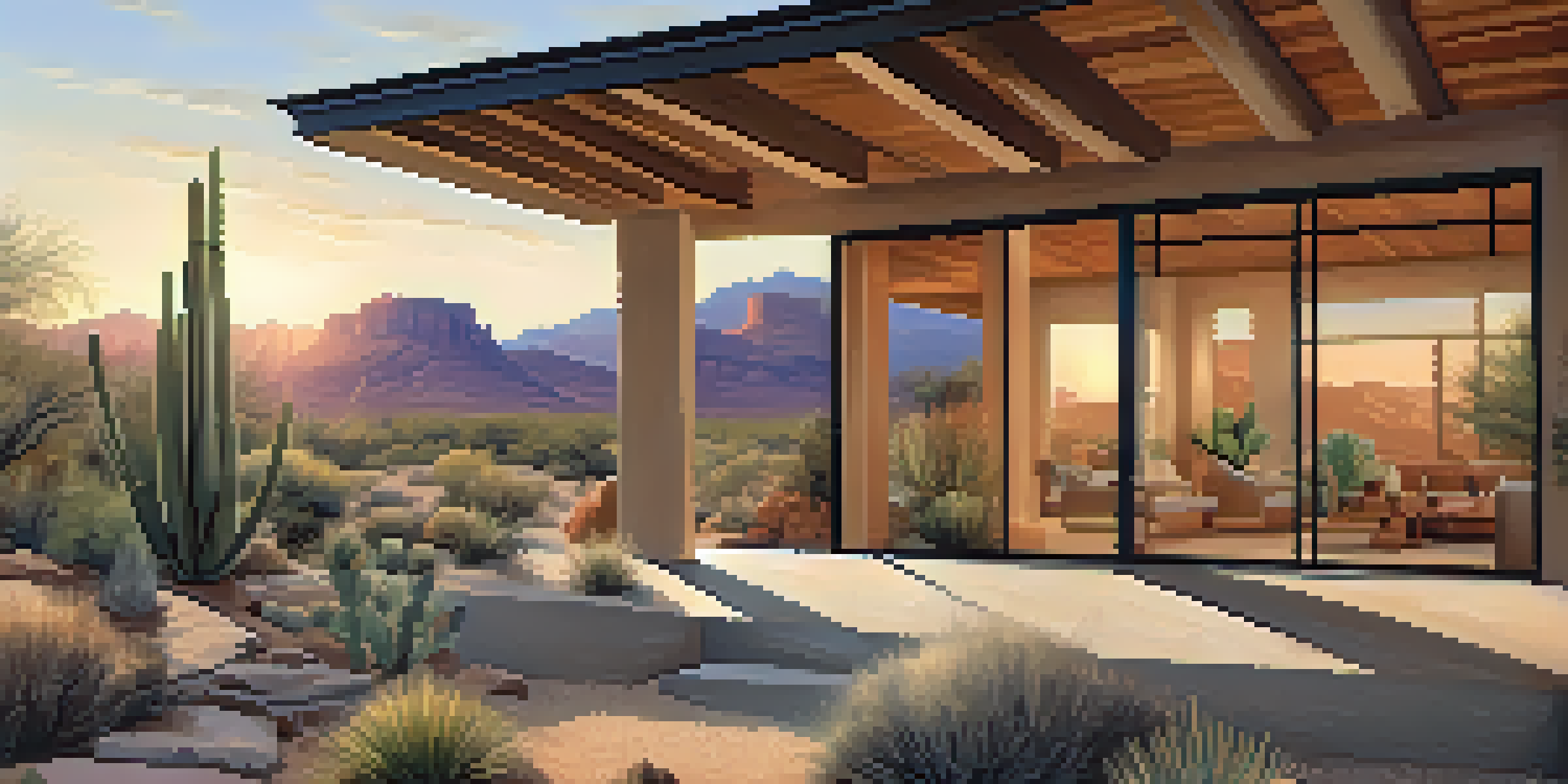The Role of Desert Climate in Arizona's Modern Architecture

Understanding Arizona's Desert Climate and Its Impact
Arizona's desert climate, characterized by high temperatures and low humidity, profoundly influences architectural design. Understanding this climate is essential for creating buildings that are not only functional but also comfortable for inhabitants. The extreme heat during summer months necessitates innovative solutions to maintain a livable indoor environment. This climate's unique challenges have fostered a rich architectural movement that prioritizes sustainability and comfort.
Sustainable Design: A Response to Harsh Conditions
Sustainable design practices have emerged as a crucial response to Arizona's challenging climate. Architects often incorporate passive solar techniques, which harness natural sunlight while minimizing heat gain. For instance, strategically placed overhangs can provide ample shade, reducing the need for air conditioning. This approach not only conserves energy but also creates a more pleasant living environment, harmonizing with the surrounding desert landscape.
Sustainable Design for Desert Living
Architects in Arizona prioritize sustainable design practices, utilizing passive solar techniques and natural materials to enhance comfort and energy efficiency in a harsh climate.
Natural Materials: Blending Architecture with Nature
Incorporating natural materials is a hallmark of modern architecture in Arizona, serving both aesthetic and practical purposes. Materials such as adobe, rammed earth, and local stone not only reflect the region's beauty but also offer thermal mass, helping to regulate indoor temperatures. For example, adobe structures can keep interiors cool during the day and warm at night, a feature that traditional designs have long embraced. This blend of architecture and nature fosters a sense of place that resonates with residents and visitors alike.
Open Spaces and Indoor-Outdoor Living
Many modern homes in Arizona emphasize open spaces and seamless indoor-outdoor living, a response to the region's stunning natural scenery. Large windows and sliding glass doors blur the line between inside and outside, inviting the desert landscape into everyday life. This design choice not only provides breathtaking views but also encourages natural ventilation, which is essential in the dry climate. Consequently, these homes become sanctuaries that celebrate the unique allure of the Arizona desert.
Cultural Influences Shape Architecture
The architectural landscape in Arizona is enriched by diverse cultural influences, blending Native American, Spanish, and contemporary elements to create vibrant and unique structures.
Innovative Cooling Solutions in Modern Architecture
To combat the intense summer heat, architects in Arizona have embraced innovative cooling solutions that push the boundaries of traditional design. Techniques like evaporative cooling and strategic ventilation systems are increasingly common. For example, a home might utilize a roof-mounted cooling system that draws in cooler evening air, significantly lowering indoor temperatures. These advancements not only enhance comfort but also reduce energy consumption, aligning with the state's sustainability goals.
Cultural Influences on Arizona's Architectural Styles
The diverse cultural influences present in Arizona play a significant role in shaping modern architectural styles. Native American, Spanish, and contemporary design elements often merge, creating unique and vibrant structures. For instance, the use of vibrant colors and intricate patterns can be traced back to indigenous designs, while modern architecture incorporates sleek lines and innovative materials. This cultural interplay enriches the architectural landscape, making it as diverse as the people who inhabit it.
Innovative Solutions for Heat Management
To address extreme summer heat, modern Arizona architecture embraces innovative cooling solutions and open indoor-outdoor living spaces that promote comfort and sustainability.
Community Spaces: Reflecting Local Identity
Community spaces in Arizona are designed with the local climate in mind, fostering a sense of belonging and identity. Parks, plazas, and public buildings often feature shaded areas and water elements that encourage social interaction while providing relief from the heat. For instance, a town square might include misting systems and shaded seating areas, making it a popular gathering spot. These thoughtfully designed spaces reflect the community's values and enhance the quality of life for residents.
The Future of Architecture in Arizona's Desert Climate
Looking ahead, the future of architecture in Arizona will likely continue to evolve in response to its desert climate. As climate change poses new challenges, architects will need to innovate further to create resilient and sustainable structures. Expect to see more integration of smart technology and eco-friendly materials that adapt to environmental conditions. By embracing these advancements, Arizona's architecture can remain a beacon of modern design while respecting the unique beauty of its desert landscape.